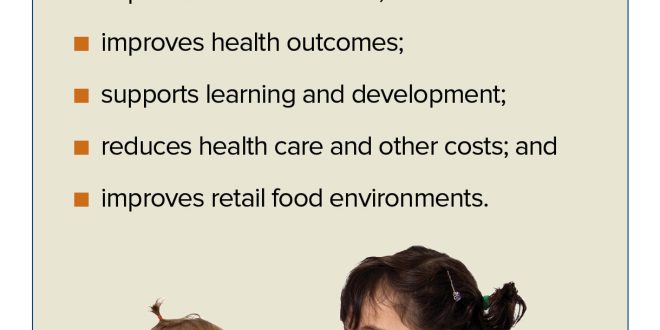Children who lose access to the Special Supplemental Nutrition Program for Women, Infants, and Children (WIC) often experience a decline in nutritional intake, potentially impacting their health and development. This article examines the consequences of losing WIC benefits, exploring the specific nutritional deficiencies children may face and the long-term implications of these changes. We will also discuss potential solutions and policy recommendations to mitigate the negative effects of benefit loss.
Understanding the WIC Program and Its Benefits
Ever wondered what happens when kids lose access to vital support programs like WIC? It’s not just about missing out on free groceries; it’s about the potential domino effect on their health and development. We’re talking about real consequences that can shape their futures. So, what exactly is WIC, and why is it so important?
What is the WIC Program?
WIC, or the Special Supplemental Nutrition Program for Women, Infants, and Children, is a federal assistance program designed to provide nutrition and health care support to low-income pregnant women, breastfeeding women, and infants and children up to age five. It aims to safeguard the health of these vulnerable groups by providing nutritious foods, nutrition education, and referrals to healthcare and other social services. Think of it as a safety net, catching families before they fall into nutritional hardship. Pretty crucial, right?
Benefits Provided by WIC
Okay, so what does WIC actually give families? Well, the benefits are multifaceted. First, there are the food packages tailored to meet the specific nutritional needs of different categories of recipients—pregnant women get one thing, infants get another, and so on. These packages include things like milk, eggs, cereal, juice, and other healthy staples. But it’s not just about the food. WIC also offers nutrition education, teaching parents how to make healthy choices and prepare nutritious meals. And perhaps most importantly, WIC provides referrals to healthcare services, connecting families with doctors, dentists, and other essential resources. It’s a whole package deal designed to support healthy growth and development. Wouldn’t you agree it’s a pretty comprehensive approach?
The Impact of Losing WIC Benefits on Nutritional Intake
Now, let’s get to the heart of the matter: what happens when that safety net disappears? What happens to those kids when they lose WIC benefits? It’s not a pretty picture, folks. The nutritional intake of children losing WIC benefits often takes a nosedive, leading to some serious deficiencies. I mean, can you imagine suddenly not having access to those essential foods anymore?
Specific Nutritional Deficiencies Observed
When children lose WIC, studies have shown they often experience deficiencies in key nutrients like iron, vitamin D, and calcium. Iron deficiency can lead to anemia, affecting energy levels and cognitive development. Vitamin D is crucial for bone health, and a lack of it can increase the risk of rickets. And calcium? Well, that’s essential for building strong bones and teeth. Without these nutrients, kids can face some pretty significant health challenges. It’s almost like taking away the building blocks of a healthy childhood. Makes you wonder, doesn’t it?
Changes in Dietary Habits After WIC Termination
Losing WIC isn’t just about missing specific nutrients; it can also lead to broader changes in dietary habits. Families may resort to cheaper, less nutritious foods to make ends meet. Think more processed foods, fewer fruits and vegetables. This can create a vicious cycle, where poor nutrition leads to poor health, which leads to even more reliance on cheap, unhealthy foods. It’s a tough spot for any family to be in, and it highlights the critical role WIC plays in supporting healthy eating habits. Who would’ve thought cutting benefits could have such a ripple effect?
Long-Term Health Consequences of Nutritional Decline
Okay, so we’ve established that losing WIC can lead to nutritional deficiencies. But what are the long-term consequences of this nutritional decline? It’s not just about feeling a little tired or getting sick more often. We’re talking about potential impacts on physical development, cognitive function, and even behavior. Seriously heavy stuff.
Impact on Physical Development
Nutritional deficiencies in early childhood can have lasting effects on physical development. Children may experience stunted growth, weakened immune systems, and increased susceptibility to chronic diseases later in life. These early nutritional setbacks can cast a long shadow, affecting their overall health and well-being for years to come. It’s like building a house on a weak foundation—it might stand for a while, but eventually, it’s going to crumble. Makes you think about the importance of early intervention, doesn’t it?
Cognitive and Behavioral Effects
And it’s not just about physical health. Nutritional deficiencies can also impact cognitive function and behavior. Iron deficiency, for example, has been linked to impaired cognitive development and behavioral problems. Children may have difficulty concentrating in school, struggle with learning, and exhibit increased irritability or aggression. These challenges can affect their academic performance, social interactions, and overall life trajectory. Talk about a double whammy! It’s hard to overstate how vital proper nutrition is for a child’s developing brain. Don’t you think?
Factors Contributing to Nutritional Decline After WIC
So, why does this nutritional decline happen after children losing WIC benefits? It’s not just about the loss of the benefits themselves; it’s often a combination of socioeconomic factors and limited access to alternative resources. Let’s break down some contributing factors, shall we?
Socioeconomic Factors
Poverty, unemployment, and lack of access to affordable healthcare can all contribute to nutritional decline after WIC. Families who are already struggling to make ends meet may find it even harder to provide nutritious food for their children once WIC benefits are gone. It’s a complex web of challenges that can trap families in a cycle of poverty and poor health. It’s truly disheartening to see how many families are just one missed paycheck away from food insecurity, isn’t it?
Access to Alternative Resources
Even if families are aware of other resources, like food banks or SNAP (Supplemental Nutrition Assistance Program), accessing them can be a challenge. Transportation, limited hours, and bureaucratic hurdles can all make it difficult for families to get the help they need. And let’s be honest, navigating these systems can be daunting, especially for families who are already stressed and overwhelmed. Sometimes it feels like the system is designed to make it as hard as possible to get help, doesn’t it?
Potential Solutions and Policy Recommendations
Okay, so we’ve identified the problem. Now, what can we do about it? What are some potential solutions and policy recommendations to mitigate the negative effects of benefit loss? It’s not an easy fix, but there are definitely steps we can take to improve the situation. It’s all about finding ways to support families and ensure that children have access to the nutritious food they need to thrive.
Expanding WIC Eligibility
One potential solution is to expand WIC eligibility to include more families. By increasing the income threshold or extending the age range for children, we can ensure that more kids have access to the program’s benefits. This would provide a crucial safety net for families who are struggling to make ends meet and prevent them from falling into nutritional hardship. Seems like a no-brainer, right?
Improving Transition Support
Another option is to improve transition support for families who are losing WIC benefits. This could include providing information about other resources, helping them navigate the application process for SNAP, and offering nutrition education to help them make healthy choices on a limited budget. By providing this kind of support, we can help families maintain healthy eating habits even after their WIC benefits expire. It’s like giving them the tools they need to succeed, even after the safety net is gone. Smart, huh?
Strengthening Community Food Resources
Finally, we can strengthen community food resources, such as food banks and meal programs. By increasing funding for these programs and making them more accessible, we can ensure that all families have access to nutritious food, regardless of their income or circumstances. This would create a stronger safety net for the entire community and help to prevent food insecurity and nutritional decline. It takes a village, right? And we all have a role to play in ensuring that our neighbors have enough to eat.
So, losing WIC benefits can have serious consequences for children’s nutritional intake and overall health. We’ve looked at the specific deficiencies they might face, the long-term impacts on their development, and the factors that contribute to this decline. It’s a complex issue, but one that demands our attention. By expanding eligibility, improving transition support, and strengthening community food resources, we can help ensure that all children have the opportunity to grow up healthy and strong. It’s not just about providing food; it’s about investing in our future. What are your thoughts? Have you seen the effects of programs like WIC firsthand? I’d love to hear your experiences!
 Beverage Zone
Beverage Zone




